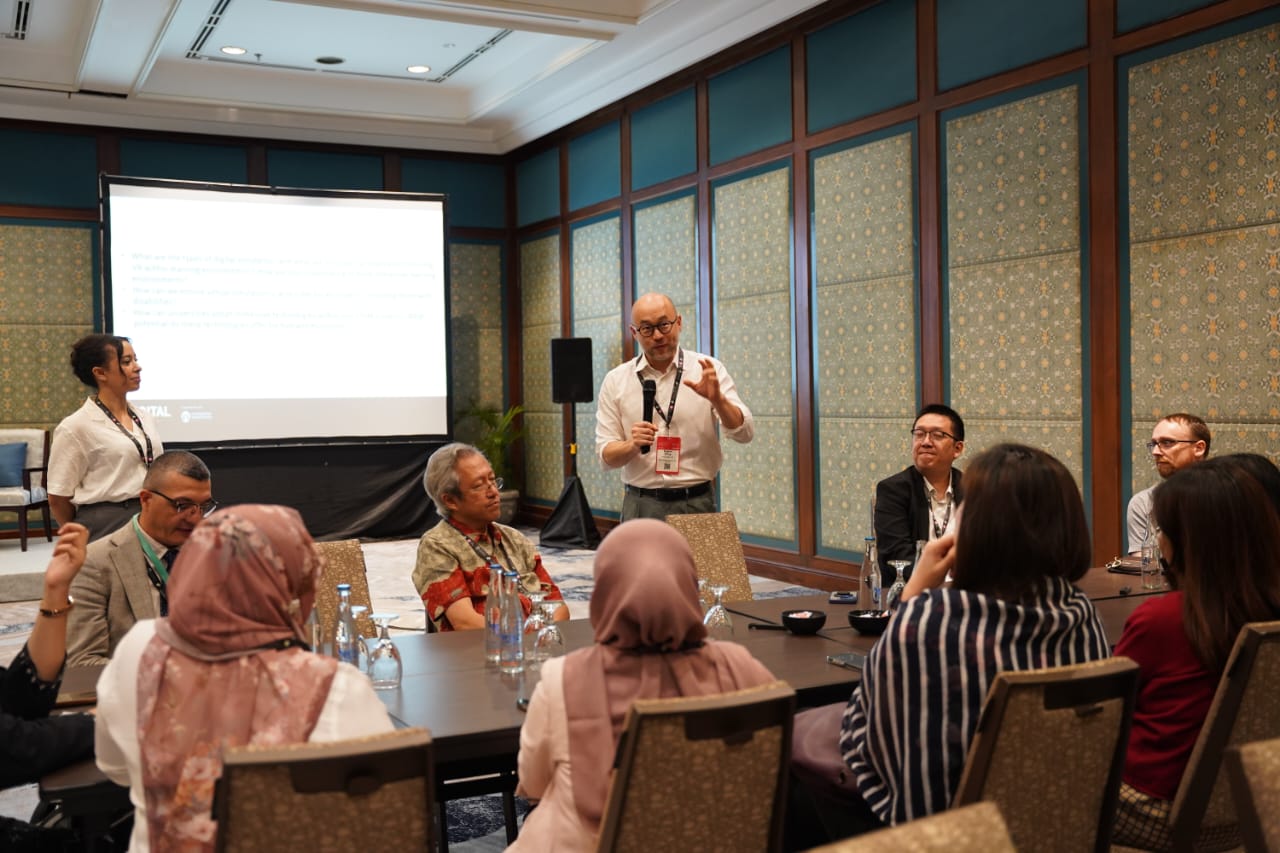“The gynecological cancer in Indonesia is still high, and cervical cancer is in the top 5 cancers in the world,” said Prof. Dr. dr. Hariyono Winarto, SpOG, Subsp. Onk, in his inauguration speech as a professor at the University of Indonesia in the IMERI Faculty of Medicine UI Hall yesterday (Wednesday, 24/1). Prof. Hariyono delivered a scientific oration titled “The Role of Minimally Invasive Approaches for Better Gynecological Diagnosis and Management”. He is listed as a professor in Gynecological Oncology, Department of Obstetrics and Gynecology, Faculty of Medicine UI.
According to Prof. Hariyono, in 2022 Cipto Mangunkusumo Hospital recorded 383 (64%) cervical cases, 97 (16%) ovarian cases, and 121 (20%) endometrial cases. For this reason, appropriate treatment is necessary to tackle gynecological cases.
The treatment of gynecological cancer involves multimodality therapy, which is a combination of surgery, chemotherapy, and radiotherapy. Therapeutic modalities for each cancer include cervical cancer (surgery and radiotherapy), ovarian cancer (surgery and chemotherapy), and endometrial cancer (surgery and chemoradiation). The involvement of surgical modalities in this treatment reinforces the importance of minimally invasive surgery for better outcomes.
Minimally invasive approaches to surgery consist of laparoscopy and hysteroscopy. Laparoscopy is a surgical technique with several small incisions, approximately 5-15 mm, or in a “single port” it can reach around 40 mm. Through this small incision, the doctor inserts a telescope and its light source connected to a monitor. Doctors carry out surgical procedures in more detail and thoroughly, so the accuracy increases, and bleeding and trauma are minimized. There is also a hysteroscopy method which is done by inserting a camera and surgical instruments through the birth canal, then into the uterus.
This minimally invasive approach has several advantages, including faster recovery, reduced bleeding, lower risk of infection, smaller scars, and lower costs. Smaller incisions speed up the recovery process and reduce pain. Psychologically, this is better for the patient to shorten treatment time. Additionally, shorter treatments contribute to a reduced cost burden in the long term. If this approach is widely used by surgeons, the costs will be cheaper.
In implementing minimally invasive approaches, the surgical team must familiarize themselves with the use and care of more sensitive tools. This approach requires more costs for initial use and requires more learning and habituation time because the monitor only shows two dimensions, so it requires getting used to hand-eye coordination. Although currently there are three-dimensional camera facilities and robotic systems, they are very expensive and not widely used.
Minimally invasive approaches are also applied to gynecological cancer screening. One method of diagnosing endometrial cancer is through a swab or smear on the cervix, or by using a vaginal tampon, or endometrial brush to collect cells that shed through the cervical ostium, or from urine and then take epigenetic analysis, including DNA methylation analysis. This method can provide a good level of diagnostic accuracy, especially in patients with symptoms of post-menopausal bleeding. The accuracy of this method can reach more than 90%, providing high reliability in diagnosing endometrial cancer.
“The use of DNA methylation analysis offers accessible and minimally invasive sample availability, making it a good option to improve early detection and accuracy in the treatment of endometrial cancer, especially in high-risk patient populations,” said Prof. Hariyono.
Apart from research on gynecological cancer, Prof. Hariyono also researches other topics. Some of them are Diagnostic Challenge: Distinguishing Uterine Fibroid with Cystic Degeneration vs Ovarian Cystic Malignancy (2023); Prevalence of High-Risk Human Papilloma Virus Infection in Human Immunodeficiency Virus Positive Women in the World: A Systematic Review Based on Recent Studies (2023); and Knowledge, Attitudes, and Practices Among Indonesian Urban Communities Regarding HPV Infection, Cervical Cancer, and HPV Vaccination (2022).
The inauguration of Prof. Hariyono was led by UI Chancellor, Prof. Ari Kuncoro, S.E., M.A., Ph.D., and attended by the Director of PELNI Hospital, drg. Ary Setyo Nugroho, MPH; RSPAD GS Hospital Legal Committee, Major General TNI Dr. dr. Sutan Finekri Arifin Abidin, Sp.OG., Subsp.K.FM., M.A.R.S., M.H.; General Chairperson of POGI, Prof. Dr. dr. Yudi Mulyana Hidayat, Sp. OG, Subsp. Onk., D.MAS, M.Kes.; Professor at Bandung Institute of Technology, Prof. Dr.rer.nat. Marselina Irasonia Tan, M.S.; Chairman of the Indonesian In Vitro Fertilization Association, Prof. Dr. dr. Hendy Hendarto, Sp.OG(K); Professor of Faculty of Medicine Padjadjaran University, Prof. dr. Herman Susanto, Sp.OG. Subsp. Onk.
Prof. Hariyono completed his education at the Faculty of Medicine UI for the Bachelor’s degree program as a general practitioner (1995), a specialist in obstetrics and gynecology (2003), and a doctoral program in biomedicine (2014). He also completed the Gynecological Oncology Consultant Education at the Indonesian Gynecological Oncology Association Hospital in 2009. Currently, he serves as Head of the Gynecological Oncology Division, Department of Obstetrics and Gynecology, Faculty of Medicine UI Hospital and Assistant Manager for Innovation and Intellectual Property, Research Working Team.



